All issues

Volume 43, Issue 9
Displaying 1-6 of 6 articles from this issue
- |<
- <
- 1
- >
- >|
President's Proposal
-
—Learning from History—Satoshi MIYANO2006 Volume 43 Issue 9 Pages 579-584
Published: 2006
Released on J-STAGE: October 26, 2006
JOURNAL FREE ACCESSDownload PDF (1348K)
Original
-
Miho HANAMURA, Shigeru SONODA, Rie SAKAMOTO, Yukiko OSA, Ryouko HIRAYA ...2006 Volume 43 Issue 9 Pages 614-619
Published: 2006
Released on J-STAGE: October 26, 2006
JOURNAL FREE ACCESSThe purpose of this study was to determine the relationship between patients' Functional Independence Measure (FIM) scores, Functional Assessment Measure (FAM) scores and age and their usefulness to predict the outcome of traumatic brain injury in 109 patients. We classified the outcomes of patients in five groups. They either returned to work or school (5), returned home without any help (4), went to a welfare center for further training (3), returned home with help (2), or went to another hospital (1). The number of patients in each group was 5 : 5, 4 : 29, 3 : 21, 2 : 15, and 1 : 39. Admission and discharge FIM scores were 52±28 and 63±27 in the motor subscore and 19±9 and 22±8 in the cognitive subscore. The FAM adjustment to limitations subscores were 2.1±1.7 and 3.3±2.1. Using a regression analysis we determined that 42.1 % of the variance of the outcome could be accounted for by the admission FIM motor subscore. On the other hand, discharge data had a predictive accuracy of 55.0 % when we used classification and regression tree (CART) analyses to predict outcome. Results of the CART analyses indicate that it is possible to be in outcome groups 5 or 4 if the discharge FIM motor subscore is 73 or more and the FAM adjustment to limitation subscore is 4 or more. Thus, not only does physical ability (FIM motor) contribute to the outcome of traumatic brain injury patients, but cognitive (FIM cognitive) and awareness (FAM adjustment to limitations) abilities might also be important.View full abstractDownload PDF (449K)
Short Note
-
Takako Sato, Ryuuiti Machida, Isao Otsuka, Hiroyoshi Hara2006 Volume 43 Issue 9 Pages 620-624
Published: 2006
Released on J-STAGE: October 26, 2006
JOURNAL FREE ACCESSThis is a report of the resuls of rehabilitation treatment at our hospital for lacunar-stroke patients. The subjects of this study are 51 lacunar-stroke patients who, between January 2004 and May 2005, were in our rehabilitation unit for a complete course of therapy. All results were confirmed retrospectively and recorded electronically. The mean length of stay was 31.9 days. The mean motor FIM (Functional Independence Measure) was 41.0 at admission and 68.7 upon discharge. The mean gain in motor FIM was 27.7 overall and 1.3 per day. As for ADL (Activity of Daily Living), about 82 % of all subjects had a diminished ability to walk upon admission (above grade 4 on the modified Rankin Scale), 86 % showed better ability (below grade 3 on the modified Rankin Scale), and 84 % of all subjects returned home directly, and only 8 patients transferred to another rehabilitation hospital for convalescents. From this study, we inferred that for many lacunar-stroke patients a hospital stay of about a month is sufficient to enable them to return to their own homes, if acute-stroke rehabilitation is started immediately.View full abstractDownload PDF (474K)
Reports
-
2006 Volume 43 Issue 9 Pages 571-575
Published: September 18, 2006
Released on J-STAGE: September 15, 2009
JOURNAL FREE ACCESSDownload PDF (908K)
43rd Annual Meeting of the Japanese Association of Rehabilitation Medicine
Symposium
Symposium
-
2006 Volume 43 Issue 9 Pages 585-613
Published: September 18, 2006
Released on J-STAGE: February 10, 2010
JOURNAL FREE ACCESS
Characteristics of Patients with Traumatic Brain Injury in Rehabilitation…Shigeharu AOKI 585
Diagnosis and Evaluation of Traumatic Brain Injury…Masaharu MARUISHI 590
Cognitive Rehabilitation for Patients with Traumatic Brain Injury…Minoru TOYOKURA 594
Comprehensive Rehabilitation for Patients with Traumatic Brain Injury…Keiji HASHIMOTO, Miho NOJII, Fukuko MAJIMA, Kazuma ISHIMATSU, Toshinori NAKAMURA, Masahiro ABO 602
Social Participation and Vocational Rehabilitation for People with Traumatic Brain Injury…Junko ABE 608View full abstractDownload PDF (3346K)
Regional Meeting
-
2006 Volume 43 Issue 9 Pages 625-628
Published: September 18, 2006
Released on J-STAGE: February 12, 2010
JOURNAL FREE ACCESSDownload PDF (617K)
- |<
- <
- 1
- >
- >|